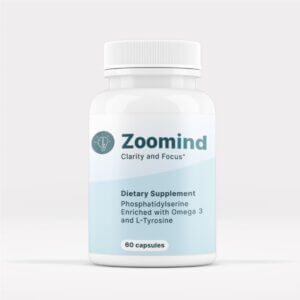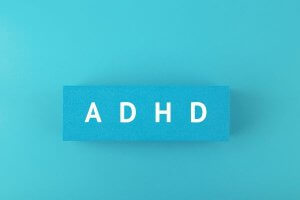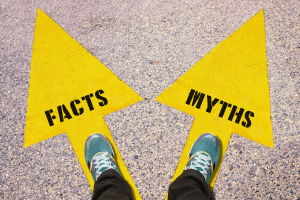Does ADHD Occur on a Spectrum?

Scientists and researchers use the term “spectrum” because it aptly describes not just one aspect of a disorder but a range of related problems. This spectrum can show different levels of severity, from milder, non-clinical issues to more serious disorders. The spectrum can also be related to a variety of related issues, which can sometimes include individual symptoms and traits.
Sometimes, conditions that used to be seen separately are now grouped under a “spectrum” approach. A well-known example is the autism spectrum, where different conditions are now considered autism spectrum disorders.
What is different about the ADHD brain?
ADHD isn’t just about one part of the brain not working correctly. Instead, it’s about how different parts of the brain have trouble connecting and communicating with each other. These brain networks are linked to emotions, attention, behavior, and alertness. People with ADHD often find it hard to control their impulses overall, not just their focus. This is why they often have issues with both attention and emotions.
The brain is made up of many complex networks. Neurons, which are brain cells, send messages and connect different parts of the brain, like the frontal, temporal, parietal, and occipital lobes, as well as areas below the cortex. Brain scans show that some of the connections in ADHD brains may not be fully developed, which may indicate issues with the axons, the parts of neurons that connect them.
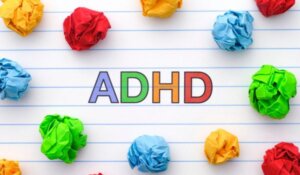
Supplementation with nutrients for brain health and development could possibly help the development of these myelin fibers and the proper function of the messaging systems of the brain.
Inattention in ADHD and How It Happens
In people with ADHD, the signals that help control attention and actions are not as strong as they should be. One idea is that these weaker signals are overwhelmed by stronger signals coming from the senses. This imbalance can show up in different parts of the brain and cause issues like not paying attention, acting without thinking, and having trouble managing emotions.
Studies using fMRI scans show that when kids with ADHD work on attention tasks like math problems, the frontal-parietal attention network in their brains doesn’t work well. Research also finds that some axon fibers connecting different parts of the brain’s attention circuits are underdeveloped, which might explain why the front and back parts of this network don’t work properly. It’s like they aren’t well-connected, so they don’t communicate effectively. As a result, the front part of the brain struggles to focus, making it hard to control behavior.
Impulsivity in the ADHD Brain and How It Happens

People without the disorder can stop themselves mid-action when they see a negative reaction from others. Most adults only need around 200 milliseconds to interrupt an action they’re about to do. Children need about 280 milliseconds. However, kids with ADHD need 20 to 30 milliseconds more to interrupt an action, which makes a big difference in controlling their behavior because actions happen so quickly.
Emotional Regulation in the ADHD Brain
The amygdala is a small brain structure that helps with emotions and making decisions. When a person is really angry or worried, it sends strong signals to the cerebral cortex. The insula, a part of the cerebral cortex, should reply with calming strategies to help you manage your emotions. This is what allows us to stop and think before reacting. However, in people with ADHD, the connection between the insula and amygdala is weaker. This makes it harder to control negative emotions. Emotional control is an important part of the ADHD brain that people often overlook.
People with ADHD often react strongly to immediate rewards but don’t put much value on future ones, suggesting issues with their brain’s regulatory system. The brains of people with ADHD show less activity in the upper part of the prefrontal cortex. This might explain why they get overly excited, frustrated, angry, and struggle to deal with delayed rewards.
ADHD Diagnosis Criteria
Diagnosing ADHD involves several steps and isn’t based on a single test. Many issues, like sleep disorders, anxiety, depression, and some learning disabilities, have symptoms similar to ADHD. If you’re worried someone might have ADHD, it’s important to talk to a healthcare provider. They can determine if the symptoms match an ADHD diagnosis. This diagnosis can be made by a mental health expert, such as a psychologist or psychiatrist, or by a primary care doctor, like a pediatrician.
For an ADHD diagnosis, the symptoms required depend on age. Children up to 16 need six or more signs of inattention or hyperactivity-impulsivity. For those 17 and older, including adults, five or more symptoms are needed. Individuals with ADHD consistently display inattention or hyperactivity-impulsivity, which affects their ability to function or develop properly.
What are the criteria for an ADHD diagnosis?
One of the criteria is when signs of hyperactivity and impulsivity have been noticeable for at least six months and they aren’t suitable for the person’s age. These signs include often fidgeting or tapping hands or feet, squirming in a seat, leaving a seat when staying put is expected, and running or climbing at inappropriate times. Older kids or adults might just feel restless. They often can’t play or relax quietly, seem like they’re constantly on the move, talk a lot, answer before questions are finished, have trouble waiting their turn, and interrupt others.
These signs should be apparent before the age of 12 and show up in at least two different places like home, school, or work. It’s important that these symptoms clearly disrupt social, school, or work life. The symptoms shouldn’t be explained by another mental disorder, and they shouldn’t only occur during episodes of schizophrenia or another psychotic disorder.
The Three ADHD Subtypes
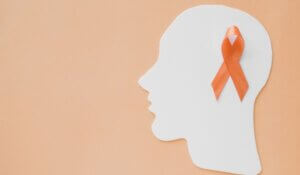
Inattentive ADHD Subtype
Individuals with this ADHD subtype don’t exhibit hyperactivity or impulsivity. Instead, they struggle to maintain focus and attention. Those with inattentive type ADHD often find it hard to concentrate and stay engaged in organized activities for long periods.
Some signs and symptoms may include a short attention span, being easily distracted, and having trouble paying attention to details. They might find it difficult to listen when someone is speaking to them and often forget to do daily tasks. They can be careless and frequently misplace things like keys, books, and phones. They may also face challenges in organizing tasks and following instructions.
Impulsive/Hyperactive ADHD Subtype
People with this ADHD subtype show hyperactive and impulsive behavior, but they don’t necessarily have problems with inattention. They often can’t sit still and tend to fidget a lot. The impulsive symptoms include interrupting others, acting without thinking, getting impatient, and being unable to wait their turn. They might also blurt out answers before questions are finished. Hyperactive symptoms include being restless, talking too much, struggling to focus on one task, fidgeting a lot, and having difficulty doing quiet activities.
Combined ADHD Subtype
The most common ADHD subtype is called the combined type. People with this type show a mix of impulsivity, hyperactivity, and inattention. To diagnose a child with this type of ADHD, they must show at least six symptoms of inattention and six symptoms of hyperactivity or impulsivity for at least six months. For people aged 17 or older, they must have at least five symptoms in each category.
What causes ADHD?
The exact cause of ADHD isn’t known, but research suggests that genetics might be a factor. This means if someone in your family has ADHD, you might be more likely to have it too.
The Controversies Surrounding Treating the ADHD Brain
In the 1990s, the United States saw a significant increase in prescriptions for stimulants, mainly to treat kids with ADHD. This happened because people started to understand ADHD better, and it gained acceptance in the medical and mental health fields. In the early 2000s, new long-lasting stimulants like Concerta, Adderall XR, and Vyvanse were introduced and promoted a lot. According to the National Survey of Children’s Health, by 2007, 9.5% of American children aged 4-17 were diagnosed with ADHD, and two-thirds of them were taking medication for it.
As the number of ADHD diagnoses and prescriptions for stimulants went up, people started to doubt if the diagnosis was really valid and whether the treatments were justified. Some critics said that ADHD was just a way to label kids who were not actually sick but just had difficult behaviors. Others believed that the diagnosis was created or exaggerated to benefit drug companies financially.
A major issue in the discussion about ADHD is the black-and-white thinking that you either have it, or you don’t, as supported by the strict categories in the DSMs. It might be more helpful to think of ADHD as one end of a spectrum of traits found in the general population.
There is a lot of evidence that suggests ADHD might be on a spectrum rather than being a separate condition. Even studies on brain scans and genetics related to ADHD support this idea. This doesn’t take away from the fact that more severe symptoms can cause distress and affect daily life, and ADHD treatment options like medication can be helpful. However, it does mean there will always be a discussion about which level of symptoms needs treatment. It also implies that treatments could be seen as ways to boost performance, helping people with short attention spans function better.
Is ADHD a type of autism?
Autism spectrum disorder and ADHD share several connections. Although ADHD isn’t part of the autism spectrum, both conditions exhibit similar symptoms, and having one can elevate the likelihood of having the other.
Is ADHD curable?
Common approaches for managing ADHD in adults usually include medication, education, skills training, and therapy. While these treatments can help control and manage many ADHD symptoms, they do not provide a cure.
What are the positive aspects of the ADHD Brain?
Traits such as hyperfocus, resilience, creativity, conversational ability, spontaneity, and high energy levels could be considered ADHD “superpowers” since individuals with ADHD can refine and leverage them effectively.
